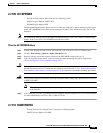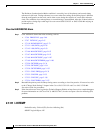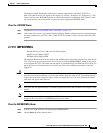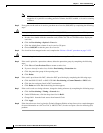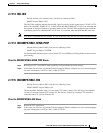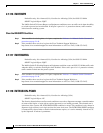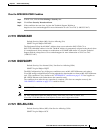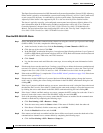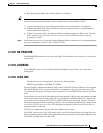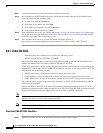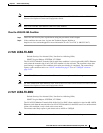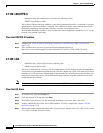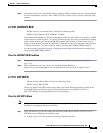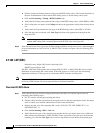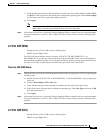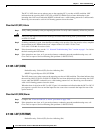
2-81
Cisco ONS 15310-CL and Cisco ONS 15310-MA Troubleshooting Guide, R7.0
Chapter 2 Alarm Troubleshooting
2.7.122 KB-PASSTHR
b. Record the primary MAA and secondary MAAs, if configured.
Tip You can record long strings of information such as the MAA address by using the CTC export and print
functions. Export it by choosing File > Export > html. Print it by choosing File > Print.
c. Log into the other node and record the primary MAA and secondary MAAs, if configured.
d. Compare this information. There should be at least one common primary or secondary MAA in
order to establish an adjacency.
e. If there is no common MAA, one must be added to establish an adjacency. Refer to the “Turn Up
Node” chapter in the Cisco ONS 15310-CL and Cisco ONS 15310-MA Procedure Guide for
procedures to do this.
Step 9 If the alarm does not clear, log into the Technical Support Website at http://www.cisco.com/techsupport
for more information or call Cisco TAC (1-800-553-2447).
2.7.122 KB-PASSTHR
The KB-PASSTHR condition is not used in the ONS 15310 platforms in this release. It is reserved for
development.
2.7.123 LASEREOL
The LASEREOL alarm is not used in the ONS 15310 platforms in this release. It is reserved for
development.
2.7.124 LCAS-CRC
Default Severity: Not Alarmed (NA), Non-Service-Affecting (NSA)
SONET Logical Objects: STSTRM, VT-TERM
The Link Capacity Adjustment Scheme (LCAS) Control Word CRC Failure condition is raised against
ML-100T-8 Ethernet cards. It occurs when there is an equipment, path, or provisioning error on the
virtual concatenation group (VCG) that causes consecutive 2.5 second CRC failures in the LCAS control
word.
The condition can occur if an LCAS-enabled node (containing ML-100T-8 cards) transmitting to another
LCAS-enabled node delivers faulty traffic due to an equipment or SONET path failure. Transmission
errors would also be reflected in CV-P, ES-P, or SES-P performance-monitoring statistics. (For more
information about performance-monitoring statistics, see the “Performance Monitoring” chapter in the
Cisco ONS 15310-CL and Cisco ONS 15310-MA Reference Manual.) If these errors do not exist, an
equipment failure is indicated.
If LCAS is not supported on the peer node, the condition does not clear.
LCAS-CRC can also occur if the VCG source node is not LCAS-enabled, but the receiving node does
have the capability enabled. Both source and destination nodes must have LCAS enabled. Otherwise, the
LCAS-CRC condition persists on the VCG.



